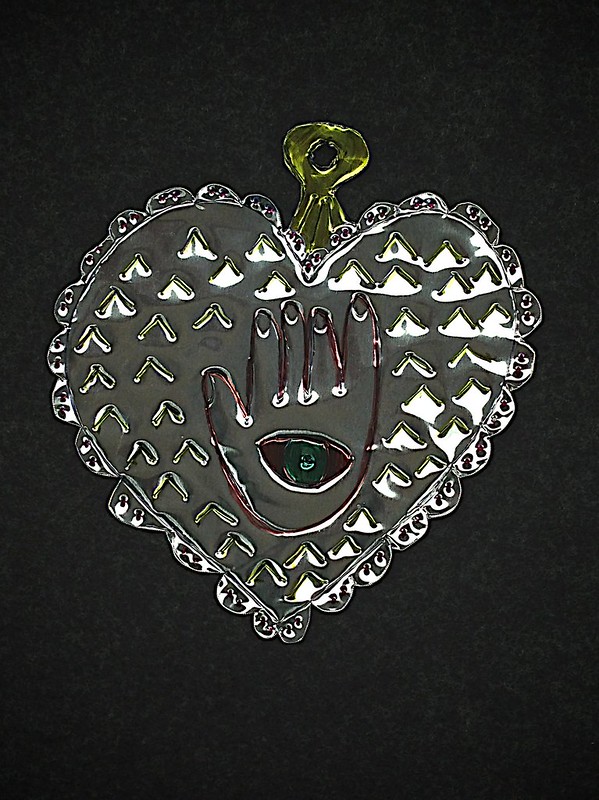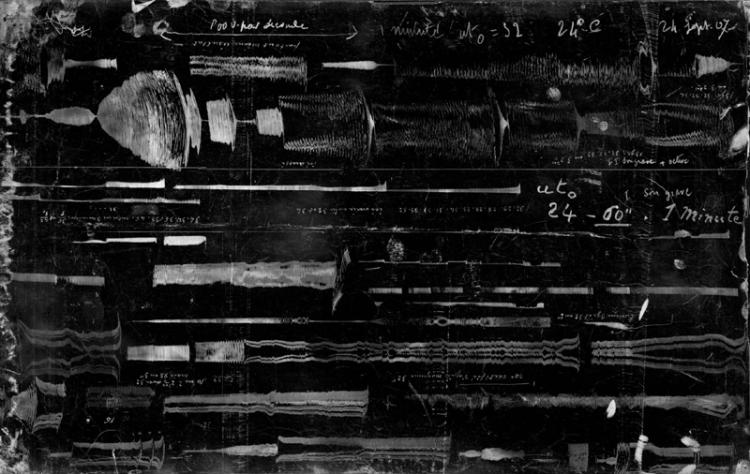Detritus, aka Making the Art Sausage
Note: This entry first appeared on my Patreon page, which is no longer active.
When we see a work of art hanging on a wall or seated on a pedestal, it looks like it appeared there by magic. You might get a hint of the work that went into its creation - brush strokes, fingerprints, chisel marks, and so on. But what don't you see?
The process of making a painting bleeds over into my surrounding workspace. There are a lot of leftover bits. Why let them go to waste?
Paint on the Palette
I'm using a glass palette these days for my acrylic paints. It's easier to clean than plastic, but there's an awkward side effect. When my acrylic paint begins to dry on the palette, it forms flakes that absolutely do not mix with wet paint. Grr.
My solution is to take a paper towel, fold it in quarters longways, saturate it with water, and squeeze out my paint onto that. I still use the glass for mixing color, and clean the mixtures off when I'm done.
If I unfold the paper towel carefully, the next day I have this cool object that's just begging to be collaged somewhere.
All the Trimmings
I've been using my extra paint to make postcards. They are standard-size and ready to be stamped and mailed. Or you can just set them on a shelf and enjoy.
I make these by cutting 9 x 12 Bristol board into quarters. However, there's a half-inch that needs to be trimmed in order to meet the USPS' standard postcard dimensions. I've been making a lot of postcards, and these strips are really accumulating. What will they become?
Trading Cards
Are you familiar with Artist Trading Cards? They're made where are collecting and business cards intersect. They're tiny - 2.5 x 3.5 inches - and that's where the standardization ends. I use ATC's as a great place to use up extra paint, switch gears, relax with a small piece, and then have something cool to give away or swap.* Will my Patreon patrons be getting Artist Trading Cards at some point? [Yes they did.]
* You can buy ATCs on eBay. But I prefer them to be gifted or traded hand-to-hand.
Ike, Mike and Mustard In Progress
Progress shots of three new paintings for the Grand Reopening of DNA Galleries in Oklahoma City's Plaza District.
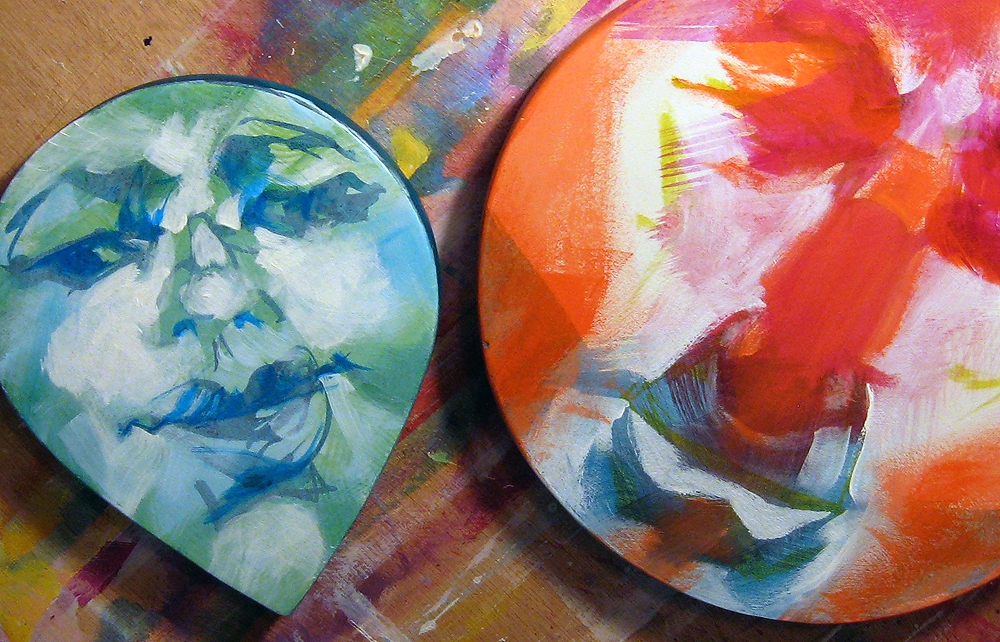
Ike & Mike, in progress. Acrylic on wood panel, 2013 by Sarah Atlee.
Dylan and Amanda Bradway cut these teardrop shapes out of wood, and invited artists to embellish them for the upcoming show. Here they are sanded and prepped for painting.
The teardrop shape is from DNA Galleries' new improved logo.
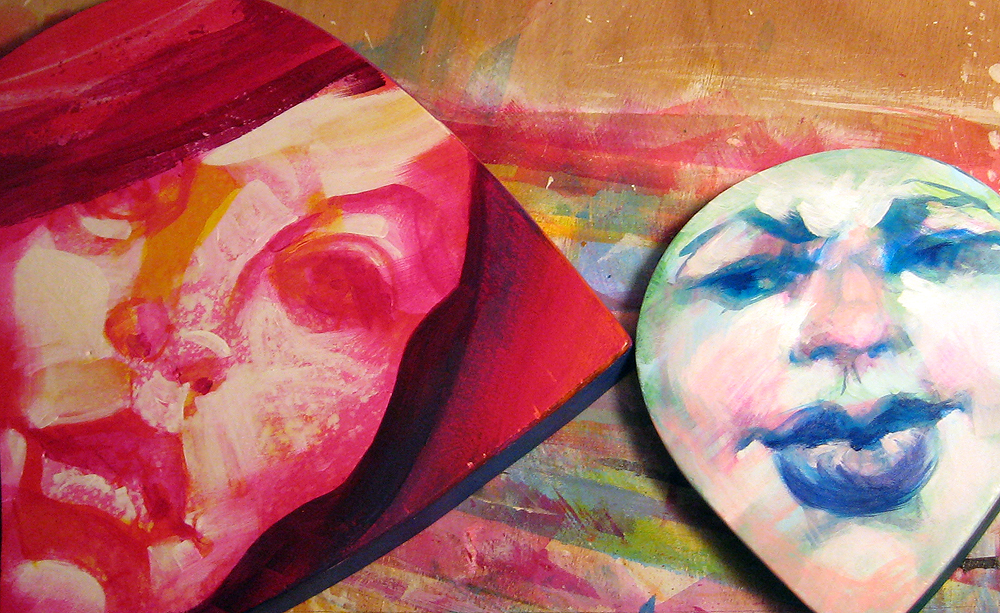 Mustard & Ike, in progress. Acrylic on wood panel, 2013 by Sarah Atlee.
I decided to reorient two of my three teardrop panels to point in different directions.
Mustard & Ike, in progress. Acrylic on wood panel, 2013 by Sarah Atlee.
I decided to reorient two of my three teardrop panels to point in different directions.
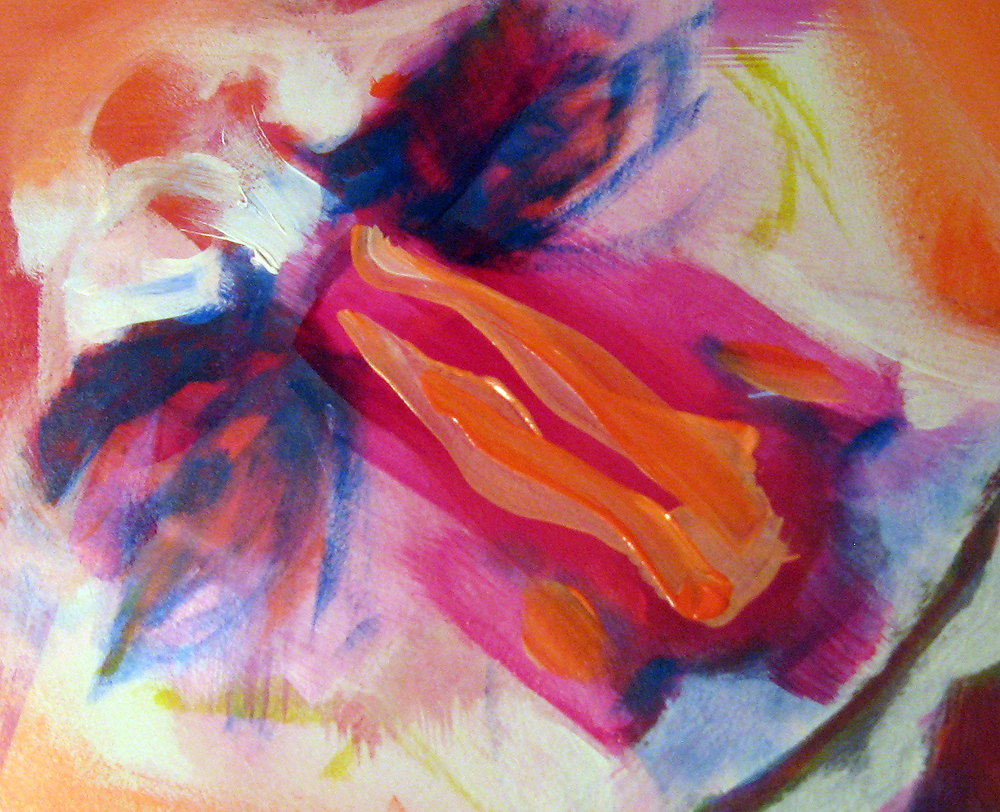 Mike, detail, in progress. Acrylic on wood panel, 2013 by Sarah Atlee.
Mike, detail, in progress. Acrylic on wood panel, 2013 by Sarah Atlee.
I'll post more pictures when the paintings are finalized.
Mark your calendars; the celebration will be on Thursday, May 2! Details below.

Milagros for Boston
Chicago community artist Guillermo Delgado is collaborating with second-graders on a spontaneous project they're calling Milagros for Boston.
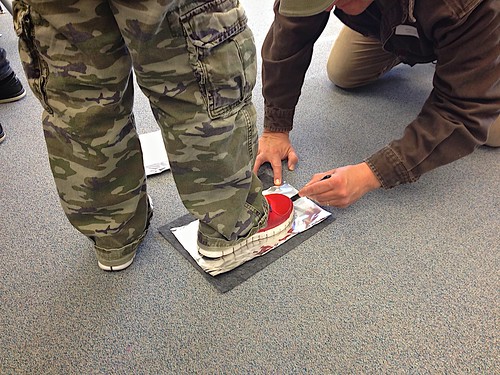 Photo by Guillermo Delgado. Used with permission.
Photo by Guillermo Delgado. Used with permission.
From the artist:
"Milagros for Boston is a tribute by 2nd graders to all the people affected by the Boston Marathon bombings on April 15, 2013. Students will create an art installation made of tin milagros (running shoes, hands, and legs) and display it in the storefront window of a local running shop."
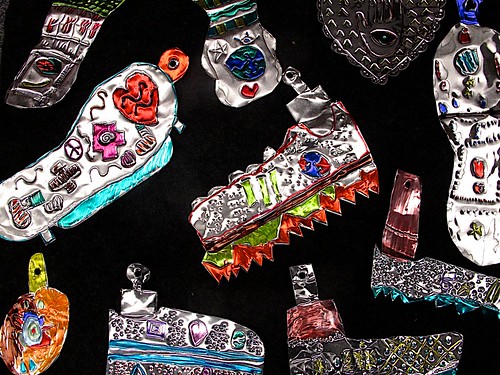 Photo by Guillermo Delgado. Used with permission.
Photo by Guillermo Delgado. Used with permission.
If you're not familiar, a milagro is a small charm, usually made of metal, used as part of a prayerful offering. From Wikipedia:
"[Milagros] are used to assist in focusing attention towards a specific ailment, based on the type of charm used. Milagro symbolism is not universal; a milagro of a body part, such as a leg, might be used as part of a prayer or vow for the improvement of a leg; or it might refer to a concept such as travel. Similarly, a heart might represent ideas as diverse as a heart condition, a romance, or any number of other interpretations. Milagros are also carried for protection and good luck."
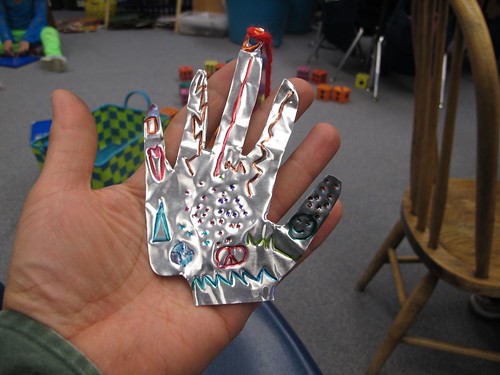 Photo by Guillermo Delgado. Used with permission.
Photo by Guillermo Delgado. Used with permission.
The artist commented on his Facebook page that "I was inspired by the conversations that I had with my own children yesterday. It's difficult to have these kinds of conversations, but I think we need to. And I couldn't start this morning's class with 2nd graders and teachers without addressing it. Fortunately, they embraced it! The project developed like lightning: ideas, emails, and phone calls. It's a true community collaboration!"
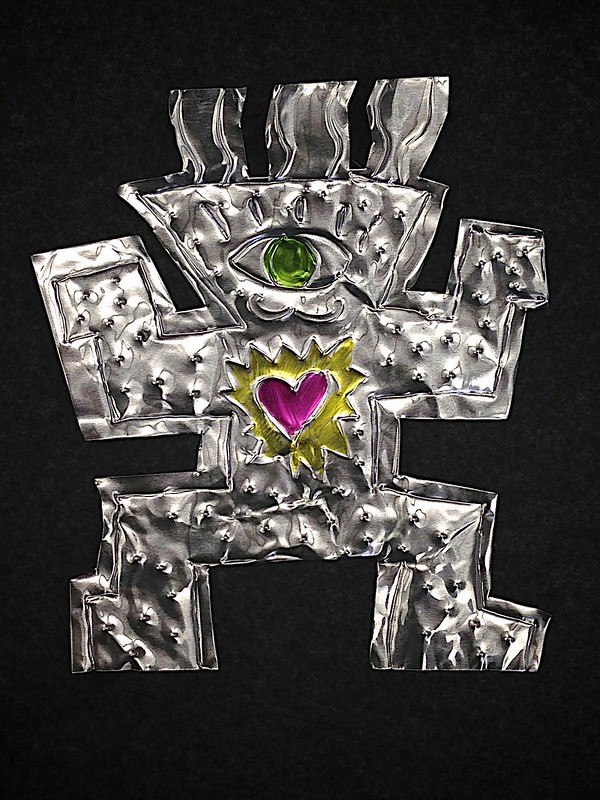 Photo by Guillermo Delgado. Used with permission.
Photo by Guillermo Delgado. Used with permission.
In an email, Delgado told me that "In my twenty years of teaching: this was one of the most powerful and meaningful experiences I have had in the classroom and with children. The teachers agreed too; we were all super into it! It was an amazing experience for all of us."
You can read more about Guillermo Delgado on his website, and keep up with the Milagros for Boston project on Flickr.
Markup Languages in Art - Part 3: Chorus Lines
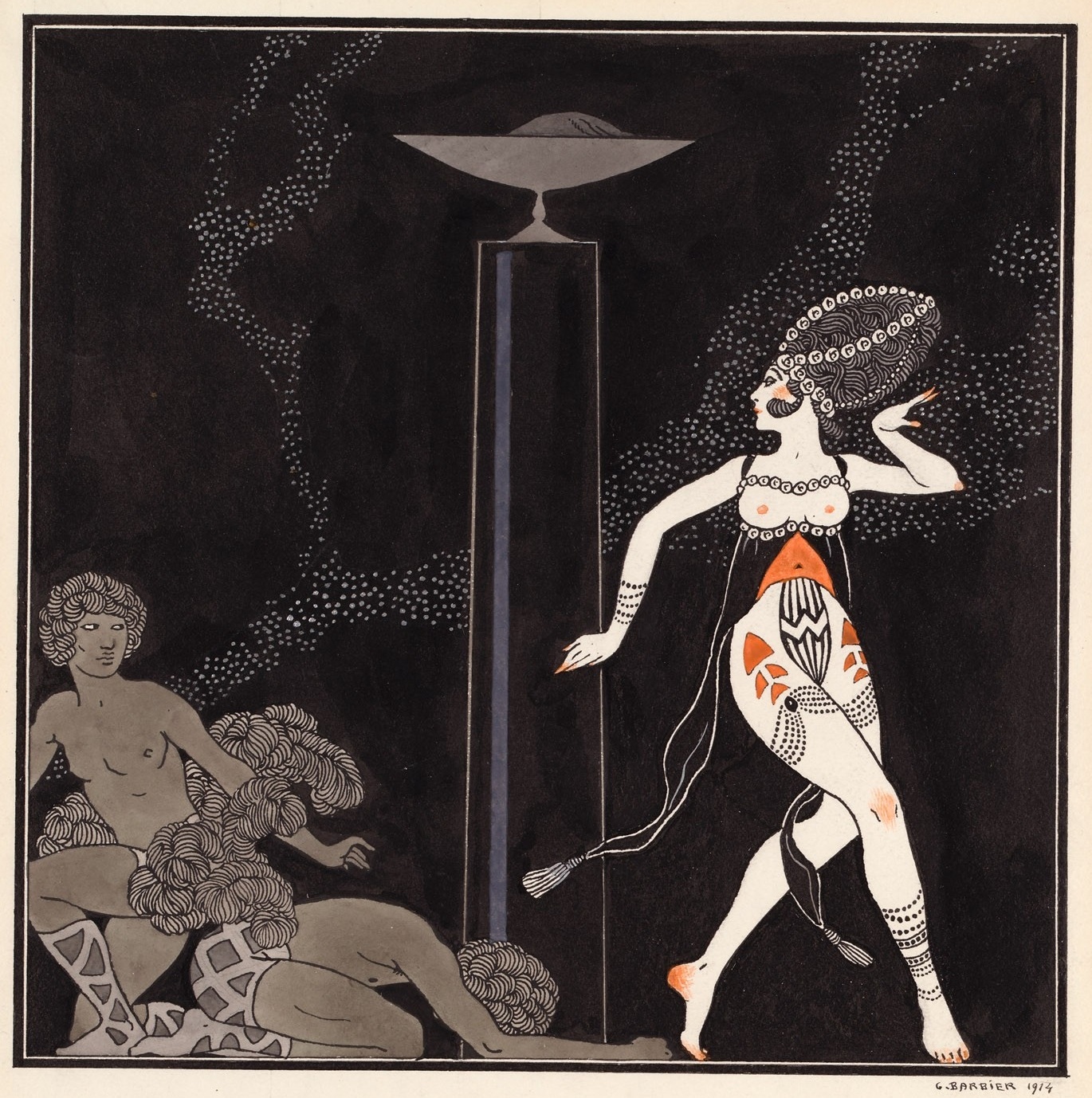 Bibliodyssey: The Ballets Russes
Bibliodyssey: The Ballets Russes
Click on any image to view its source.
"Labanotation (LN) or Kinetography Laban is a notation system for recording and analyzing human movement."
Explore other forms of dance notation here.
Gabriel Sizes, Etude Expérimentale d’Acoustique Musicale, 1920, via Bibliodyssey
"I design fractal algorithms using a visual application of music theory. I manipulate it in photoshop programs to create abstract artwork. I am aspiring to teach and share this process as well as make a living doing so!" - Alan Addison
CAP (Graffiti Analysis Series), 2012 by Evan Roth, via The Creators Project
"SML (Scratch Markup Language) is a new file format for recording and replaying turntablism. We’ve developed open-source tools for accurately capturing the record and crossfader movements of a scratch DJ, allowing us to analyze, transcribe, and recreate scratch performances. We want to do for turntablism what Graffiti Markup Language has done for tagging — especially teaching giant robot arms how to scratch." Ed: Unfortunately it looks as though this project and its related sites are no longer being updated.
Read Markup Languages in Art, Part 1: Vexing Ology
Read Markup Languages in Art, Part 2: Durer's Rhinocerous
Markup Languages in Art - Part 2: Durer's Rhinocerous
"On February 27, 2013, students in Lynda Barry’s “Unthinkable Mind” class at the University of Wisconsin-Madison were given a piece of paper and a flair pen and asked to draw a picture that they couldn’t see. Professor Old Skull was the only one who could see the picture, and she described it line by line, asking them to draw along with the description. What happened? The picture Professor Old Skull was describing appears at the end of the video."
[Professor Lynda got this great idea from Robert Brinkerhoff.]
Click on any image to view its source.
"The absurd rendering of many of the animals comes about because the engravers/artists working on the project did not actually see the animals. They had to rely on descriptions and their imagination and, as was the fashion of the time, the animals were placed in contrived settings and often given human facial qualities, which only serves to heighten the sense of bizarre. And thankful we are too." - Bibliodyssey
 "Despite these repeated assurances of their fidelity to nature, the colors used in the paintings are applied, more often than not, in a totally arbitrary fashion and bear no resemblance whatsoever to those of the living animals. …We learn further that Sambia or Loop-Visch, an anglerfish of the family Antennariidae, was captured by the artist on the sand: 'I kept it alive for three days in my house; it followed me everywhere with great familiarity, much like a little dog.'"
"Despite these repeated assurances of their fidelity to nature, the colors used in the paintings are applied, more often than not, in a totally arbitrary fashion and bear no resemblance whatsoever to those of the living animals. …We learn further that Sambia or Loop-Visch, an anglerfish of the family Antennariidae, was captured by the artist on the sand: 'I kept it alive for three days in my house; it followed me everywhere with great familiarity, much like a little dog.'"
- Theodore W. Pietsch, catalogue introduction, Samuel Fallours' Tropical Fishes of the East Indies (Taschen)
"Dürer's Rhinoceros is the name commonly given to a woodcut executed by German painter and printmaker Albrecht Dürer in 1515. The image was based on a written description and brief sketch by an unknown artist of an Indian rhinoceros that had arrived in Lisbon earlier that year. Dürer never saw the actual rhinoceros, which was the first living example seen in Europe since Roman times."
"Until the late 1930s, Dürer's image appeared in school textbooks in Germany as a faithful image of the rhinoceros."




